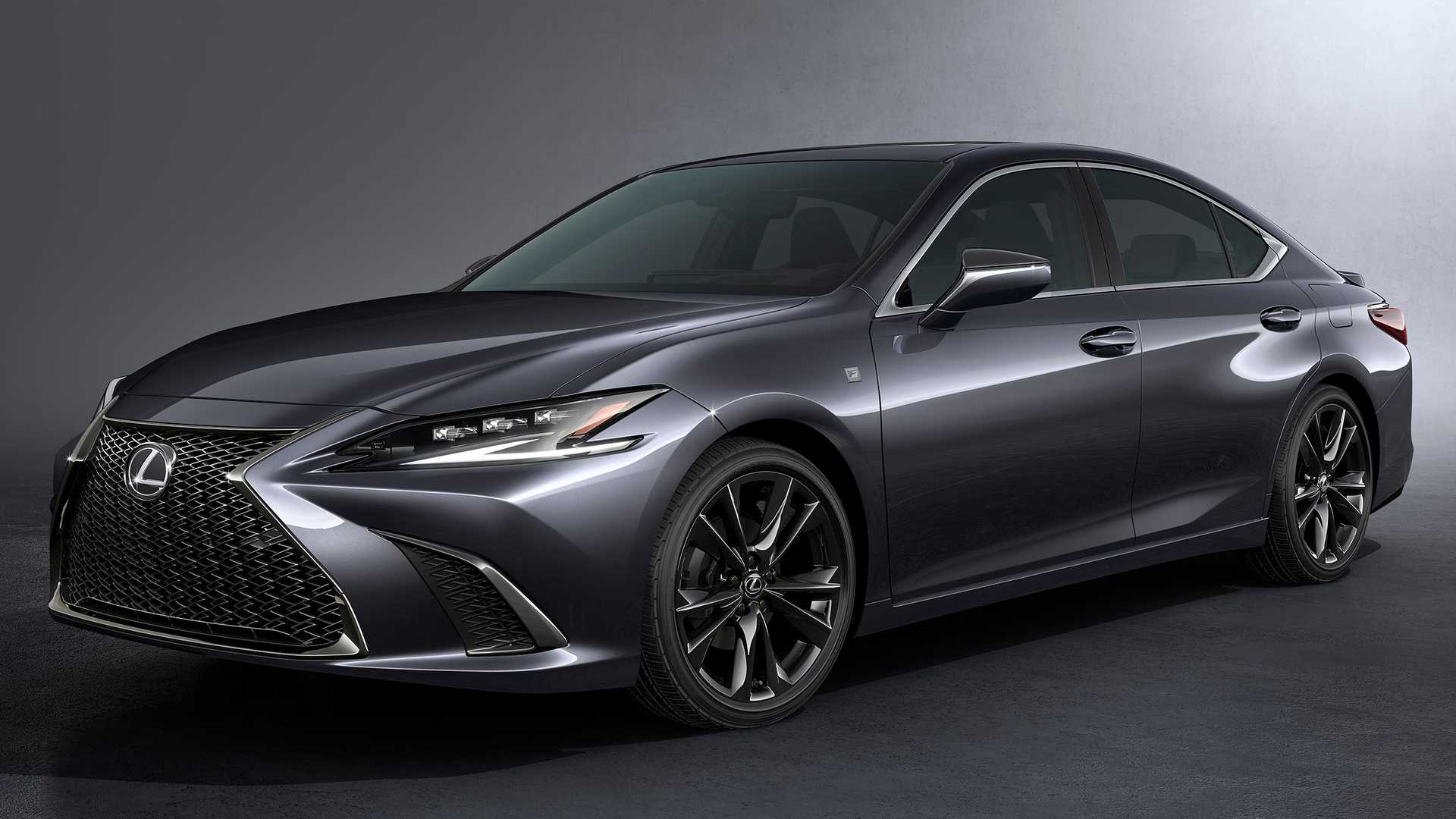Spark plugs are small but essential components in an internal combustion engine. They ignite the air-fuel mixture inside the cylinders and keep your car running smoothly.
However, some vehicles are engineered to require spark plug replacements far less frequently than others thanks to better engine designs, advanced ignition systems, and high-quality iridium or platinum plugs.
Here are 10 cars known for rarely needing new spark plugs:
1. Toyota Camry (4-Cylinder Models)
The Toyota Camry has built a reputation for long-term reliability, and that extends to its ignition system.
Especially in 4-cylinder models, the use of high-quality iridium-tipped spark plugs means many owners can go up to 120,000 miles before a replacement is needed.
Powered by Toyota’s fifth-generation hybrid powertrain, the 2025 Camry sees a notable increase in output, delivering 225 horsepower in its front-wheel-drive configuration. Despite the added 23 hp compared to previous models, the fuel economy has also improved, rising from 44/47/46 mpg city/highway/combined to 47/48/48 mpg.
“Toyota has vastly improved the Camry’s hybrid system, no question,” said deputy editor Alexander Stoklosa. “Even without the third rear motor on this front-drive example, the car hustles up to speed in an unstressed way, albeit with some grumbling from the engine.”
The suspension tuning is suitably soft, allowing the Camry to soak up bumps and rough patches with composure. Although there is some tire slap over sharper road imperfections, the 2025 Camry maintains its poise as a daily commuter.
Its handling and driver engagement remain intact in its standard form. In fact, several of our judges found the hybrid Camry to be a surprisingly pleasant partner on our winding road course.
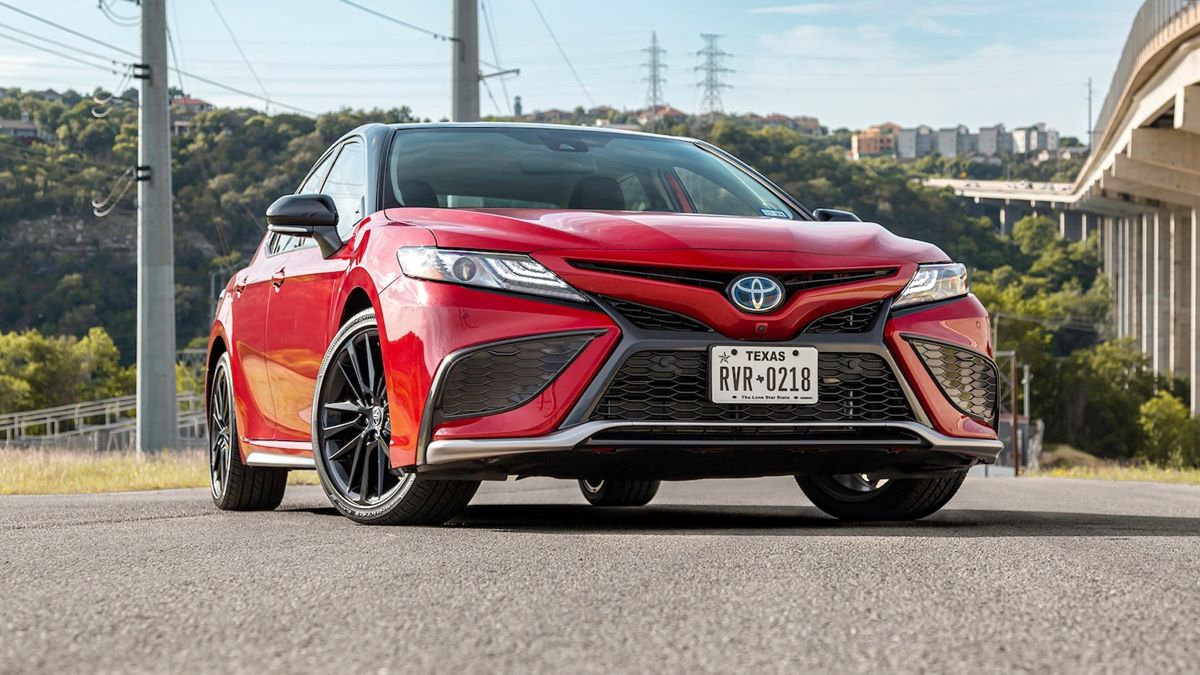
That said, the Camry does have a few shortcomings. Several of our evaluators noted concerns with the brake pedal, describing it as having a squishy, nonlinear feel followed by a wooden response.
Inside, the cabin presents a clean and modern design, but the materials used leave something to be desired, with some components feeling inexpensive. Additionally, squeaks and rattles become noticeable over rougher pavement, detracting from what is otherwise a quiet interior.
Even with those criticisms, the Camry largely gets the fundamentals right and comes equipped with a wide range of creature comforts, especially considering its $39,720 as-tested price. “For an everyday midsize sedan, the new Camry excels,” said associate editor Justin Westbrook.
“The back seat is comfortable, there are power ports everywhere, a wireless charge pad, the interior infotainment gets the job done in a simple-enough layout and format, and it’s easy to pair a phone.” When it comes to fulfilling the role of a practical midsize sedan, the XLE variant performs admirably.
2. Honda Accord
Honda engines are known for their efficiency and precision, and the Accord is no exception.
With properly timed fuel injection and long-life spark plugs, the Accord’s ignition system tends to remain healthy with minimal maintenance over long periods.
As many automakers scale back or eliminate sedans from their lineups, the Honda Accord continues to stand strong as a top contender in the midsize sedan segment. Unlike rivals such as the Toyota Camry—which has transitioned to an exclusively hybrid lineup—the Accord maintains a wider array of models and powertrain options.
For 2025, the Accord is available in six trims: LX, SE, Sport Hybrid, EX-L Hybrid, Sport-L Hybrid, and Touring Hybrid, making it an appealing choice for a broader spectrum of buyers. Pricing, including destination fees, begins at 29,445 for the LX and reaches up to \$40,450 for the Touring Hybrid.
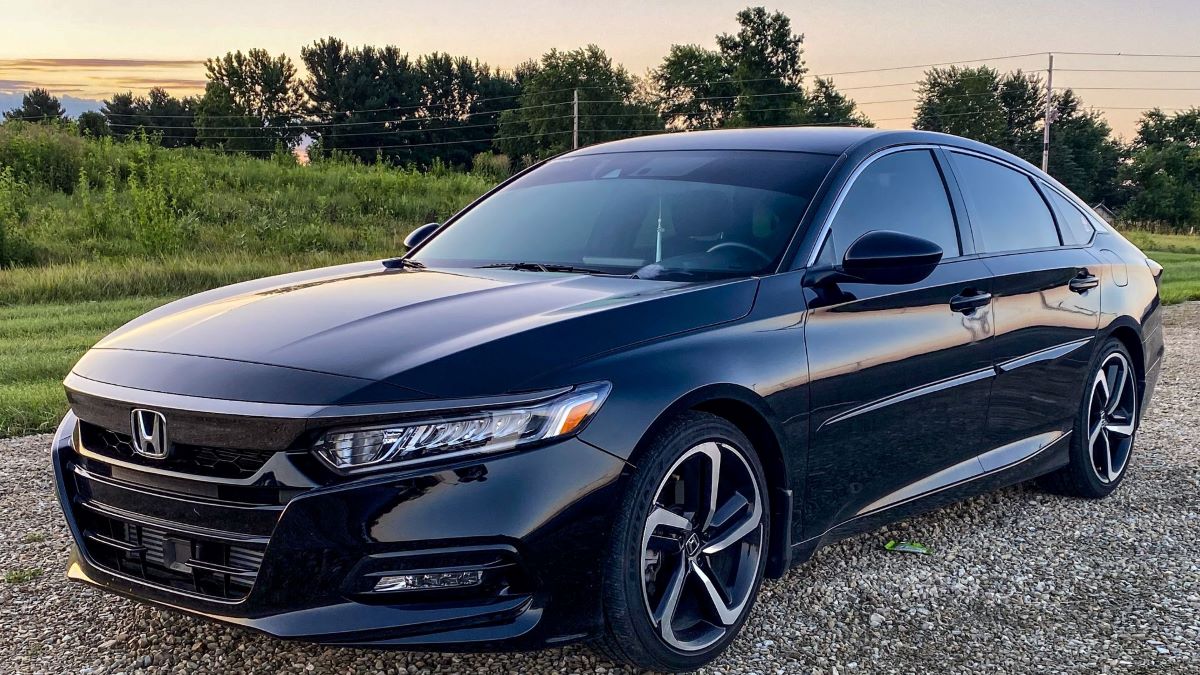
The LX and SE trims are powered by a 1.5-liter turbocharged four-cylinder engine that produces 192 horsepower, with a continuously variable automatic transmission (CVT) delivering power to the front wheels.
The hybrid variants also feature front-wheel drive and pair a 2.0-liter four-cylinder engine with an electric motor to deliver a combined 204 horsepower and an EPA-estimated 44 mpg. Unlike the Camry, the Accord does not offer an all-wheel-drive option. Still, its greatest strengths lie in its impressive fuel economy, high comfort levels, and engaging driving dynamics.
With its range of trims and available powertrains, the 2025 Accord delivers something for everyone—from the value and efficiency of the base models to the upgraded technology and performance of the hybrids. Below is a detailed breakdown of each version and its pricing as of the time of publication.
3. Mazda3 (SkyActiv Engines)
Mazda’s SkyActiv-G engines are designed for maximum combustion efficiency, meaning less strain on spark plugs.
Many owners report exceeding 100,000 miles without needing a plug change, thanks to the engine’s optimized compression and ignition timing.
The 2025 Mazda 3 continues to be offered as both a compact sedan and hatchback, placing it in direct competition with alternatives like the Toyota Corolla, Honda Civic, and Subaru Impreza.
So, is the 2025 Mazda 3 a good car? It’s a solid compact with responsive handling, a composed ride, and eye-catching design. However, its infotainment system leaves something to be desired, and the rear seat space is limited. Overall, the Mazda 3 earns a rating of 6.3 out of 10 on the TCC scale.
For 2025, Mazda introduces several updates across the 3 lineup. Notable changes include the addition of Amazon Alexa integration, expanded availability of the base S trim, and the inclusion of over-the-air updates for the navigation system.
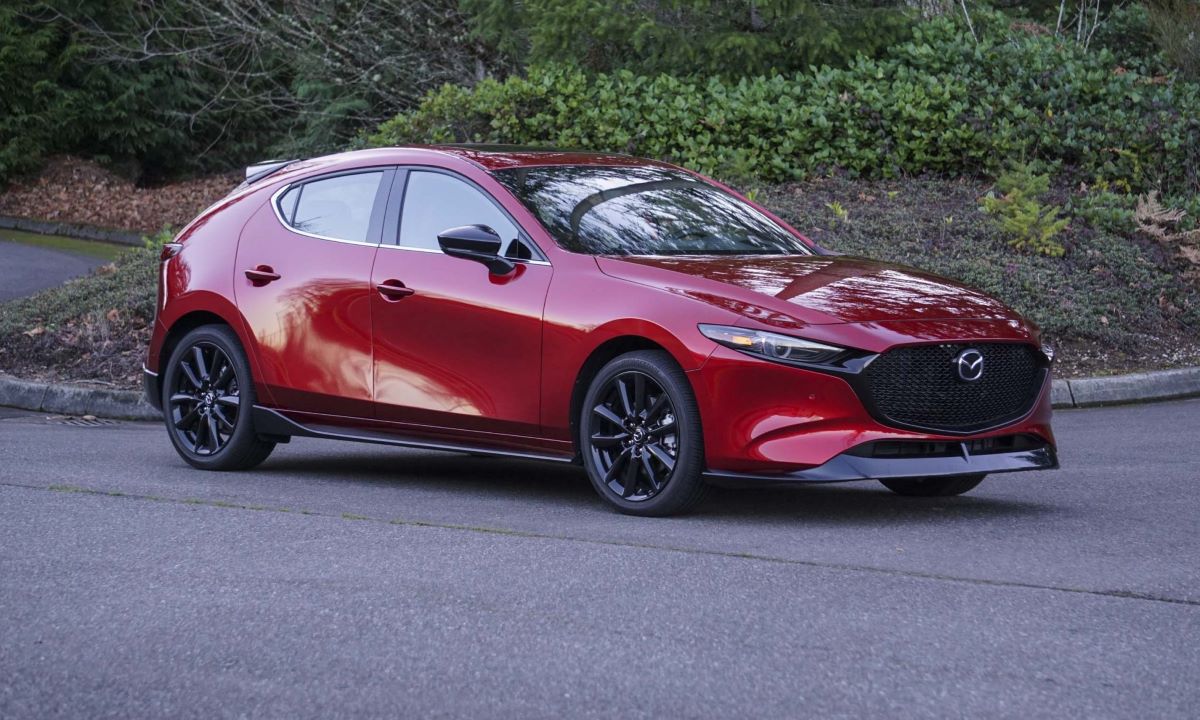
Visually, the Mazda 3 remains one of the most stylish options in the compact car segment. Its well-proportioned front end and sculpted side panels give it a refined look, although the hatchback’s thick rear roof pillar and sharply sloped rear glass won’t appeal to everyone.
Inside, both body styles benefit from a minimalist design and upscale materials that help set them apart from most competitors—though it’s unfortunate that Mazda doesn’t offer a broader range of interior color options.
The standard powertrain is a 2.5-liter inline-four engine making 191 horsepower, paired with a six-speed automatic transmission. One trim also offers a six-speed manual.
While this engine is adequate, it lacks excitement and tends to be noisier than expected. A more powerful option is available in the form of a 250-hp turbocharged four-cylinder engine, though it doesn’t deliver especially quick acceleration and requires premium fuel for peak performance.
Across the board, the Mazda 3 provides excellent steering feel and a ride that is firm without being punishing. While not a full-blown sport sedan, it still delivers an enjoyable driving experience that surpasses many of its compact-class rivals.
4. Lexus ES 350
Built with Toyota’s ultra-reliable V6 engine, the Lexus ES 350 benefits from premium components and smooth operation.
The spark plugs are durable enough to last over 100,000 miles, especially with proper maintenance and quality fuel.
The 2025 Lexus ES continues to be a standout value in the luxury midsize sedan segment, offering a soothing ride, a long list of features, and a quiet, refined interior.
While some competitors deliver sharper performance and bolder designs, the ES distinguishes itself with its overall polish, making it a compelling and accessible luxury option. It provides smooth ride quality, plush seating, and a hushed cabin, all of which contribute to its upscale feel. However, the base engine lacks excitement, and the fixed rear seats limit cargo versatility.
For 2025, the Lexus ES sees the return of the Black Line Special Edition package. The model seats five and is available with front- or all-wheel drive depending on the trim. Fuel economy ranges from 22–24 mpg in the city to 31–33 mpg on the highway, while horsepower spans from 203 to 302 depending on the engine configuration.
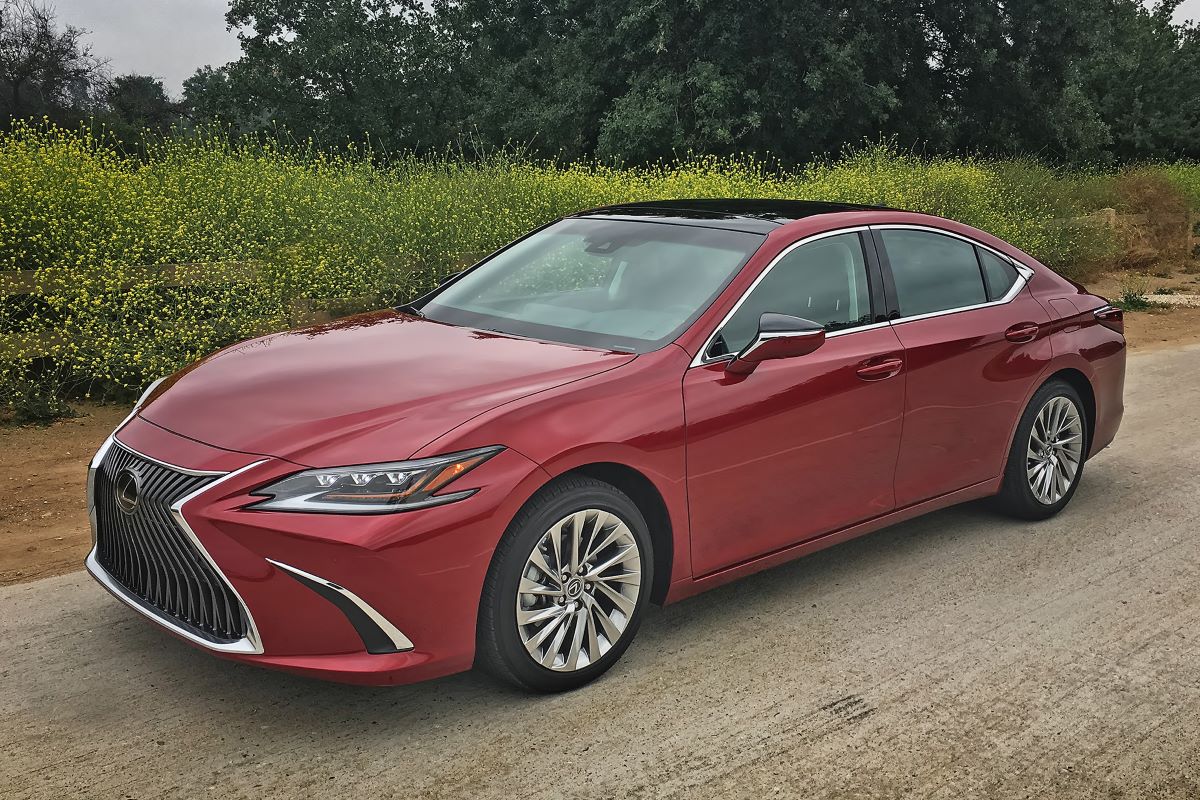
This rating reflects the ES’s well-rounded qualities, including safety, reliability, efficiency, and cargo capacity. The evaluation is updated regularly to ensure accuracy.
On the road, the ES delivers a comfortable and composed experience, absorbing imperfections with ease. However, that comfort comes at the cost of engagement—handling is somewhat soft, and the steering lacks feedback.
The standard 203-hp four-cylinder performs well in city driving but can feel strained at higher speeds. For more power, the ES 350 offers a 302-hp V6 paired with an eight-speed automatic transmission, delivering smooth and responsive shifts. The ES 250 includes all-wheel drive, while the ES 350 is front-wheel-drive only.
Fuel economy is one of the ES’s strong suits. The ES 250 achieves an EPA-estimated 28 mpg combined (24 city/33 highway), while the ES 350 returns 25 mpg combined (22 city/32 highway).
The ES 350 F Sport has similar numbers with a slightly better 31 mpg on the highway, placing the ES among the most fuel-efficient vehicles in its class—second only to the BMW 5 Series, which achieves 30 mpg combined. Inside, the ES features a tasteful and modern design, with high-end materials that align with Lexus’s luxury reputation.
The F Sport trim brings more flair with available red leather, contrasting accents, and brushed metal finishes. Front seats are supportive and cushioned, ideal for long trips, while the rear seats offer similar comfort. Though the ES’s interior rivals those of the Acura TLX and Cadillac CT5, it falls just short of the more premium feel found in models like the 5 Series and Mercedes-Benz E-Class.
The trunk offers 13.9 cubic feet of space—decent for the class—but the inability to fold down the rear seats limits flexibility. Overall, the 2025 Lexus ES continues to impress with its blend of comfort, quality, efficiency, and value, making it an excellent choice for luxury sedan buyers who prioritize refinement over aggressive performance.
5. Subaru Outback (Naturally Aspirated Engines)
The non-turbocharged variants of the Subaru Outback offer dependable performance and infrequent spark plug issues.
These engines, particularly the 2.5-liter flat-four, are known for smooth combustion cycles and well-tuned ignition.
The cabin of the 2026 Outback feels noticeably more spacious, thanks to a 2-inch boost in overall height and a wider roofline at the top. Cargo space has also been improved, with capacity behind the rear seats increasing from 32.4 to 34.6 cubic feet. Subaru has clearly focused on maximizing utility in the latest Outback, loading it with practical and clever new features.
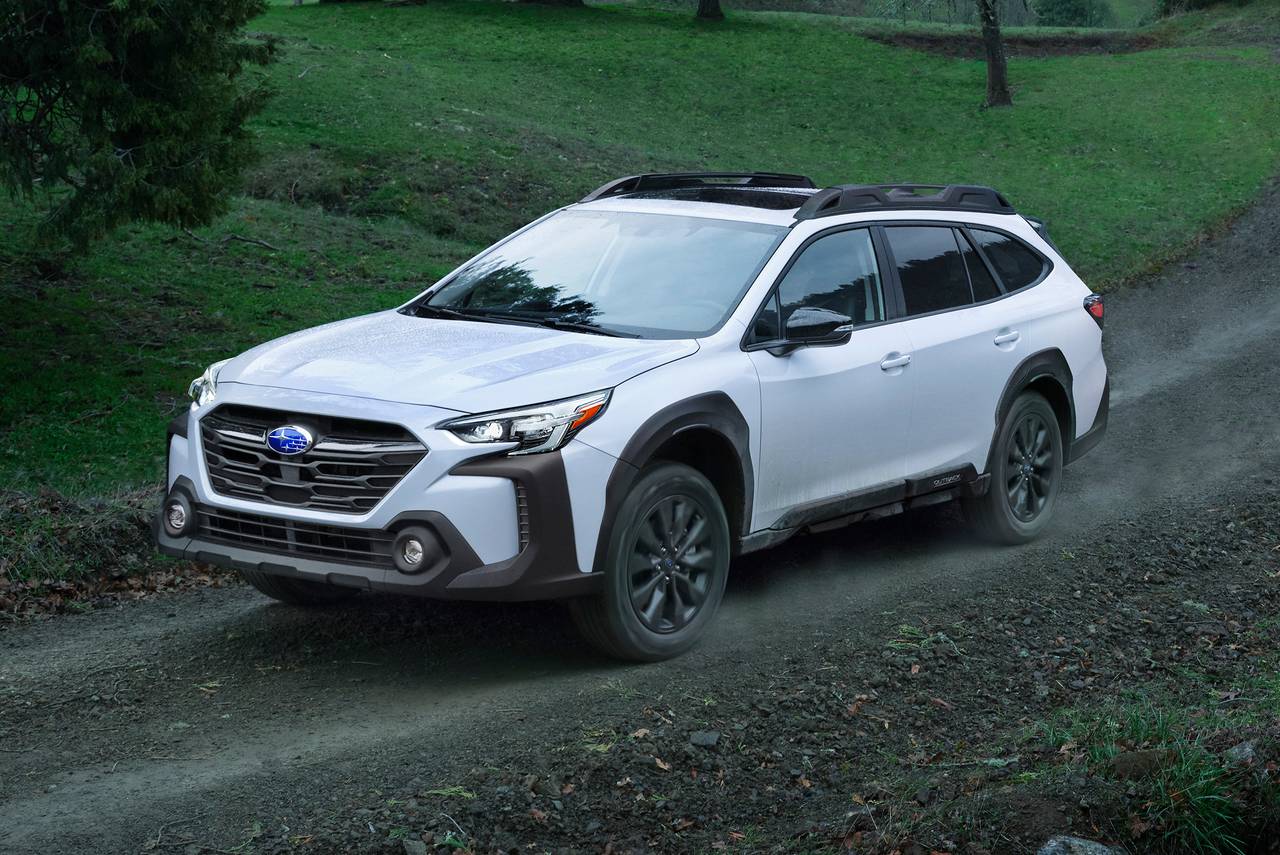
The cargo opening is impressively large, and each taillight housing features tiny, charming measurements etched into them. True to Subaru’s pet-loving audience, there are even small dog illustrations included for visual scale.
The flexible, washable cargo cover offers 10 anchor points and can be reconfigured to hold muddy hiking boots or anything else you’d prefer to keep from rolling around — “like a bunch of farm-fresh eggs.” The outer edge of the cover is magnetically secured, so you can simply push against it when carrying heavy gear, and it will swing open to make loading easier.
Additional illustrations can be found under the rear spoiler — one of which is a shark — showing what kinds of items can be hauled on the Outback’s roof.
Every trim now supports 220 pounds of roof cargo while the vehicle is in motion and up to 800 pounds when stationary. There’s also a 220-pound lateral load rating to accommodate large camping awnings, and the roof rails now feature clearer markings to help with positioning crossbars more easily.
6. Toyota Prius
The hybrid system in the Toyota Prius takes some load off the internal combustion engine, meaning spark plugs are used less frequently under low-load conditions.
As a result, many Prius owners go well past 100,000 miles without spark plug issues.
The Toyota Prius has long been the poster child for hybrids—so iconic, in fact, that the name itself has become shorthand for eco-friendly driving, much like saying “Coke” for any soda or “Hoover” for a vacuum.
Traditionally viewed as a logical but uninspiring purchase, the latest Prius shifts that perception with a sleek, contemporary design while still delivering the outstanding fuel economy its predecessors were known for.
For those exploring plug-in hybrids, the Prius might be weighed against alternatives like the Audi A3, Peugeot 308, or Hyundai Tucson. While previous generations of the Prius were often seen as plain or even unattractive, the 2025 model boasts a striking exterior.
The gracefully sloping roofline and wheels pushed to the corners lend the Prius a sportier, more dynamic stance. Compared to its sibling, the Toyota Corolla, the new Prius appears almost like a concept car brought to life—thanks in part to its bold front fascia and attention-grabbing rear light bar.
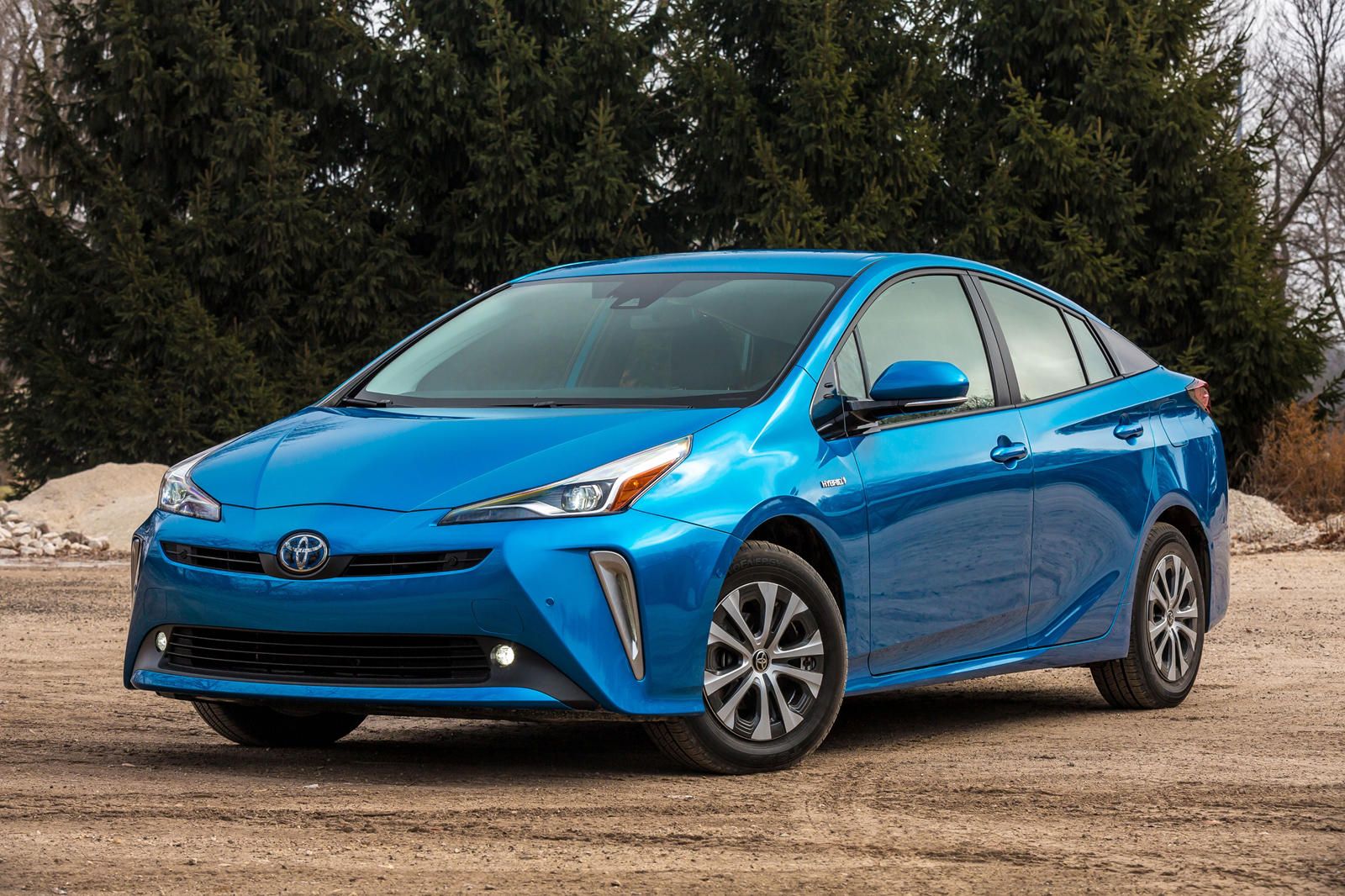
Inside, the design is more conventional but still offers a few thoughtful innovations. Most notably, the driver information display is mounted high on the dashboard so you view it over the steering wheel rather than through it. This positioning minimizes eye movement away from the road, though some drivers may find it partially obscured depending on their seating position, which could prove irritating.
Mat Watson, an expert car reviewer, captured the transformation best: “I never thought I’d find a Toyota Prius desirable—but this latest model definitely is.”
The interior features a large touchscreen infotainment system alongside a welcome array of physical climate controls. Toyota has wisely avoided relying solely on digital interfaces. The screen itself is responsive and easy to navigate, providing a good user experience without overwhelming the driver with tech.
However, the Prius falls short in interior space. While front passengers will find plenty of room, the rear seats suffer from the sloping roofline, offering limited headroom. Boot space and general cabin storage also leave something to be desired. This could disappoint those who have grown used to the practicality of older Prius models, particularly private hire drivers.
At the heart of the Prius is its hybrid powertrain, now offered exclusively as a plug-in hybrid. The system impresses, delivering close to 80 mpg when the battery is frequently recharged. Even with a depleted battery, the Prius can still manage over 50 mpg. Unfortunately, refinement isn’t its strongest suit.
The CVT transmission causes the engine to rev loudly during acceleration, and road noise from wind and tires becomes pronounced at motorway speeds. That said, the Prius performs at its best in urban environments, where the electric motor allows for near-silent operation and optimal efficiency.
If you’re in the market, Carwow offers current Toyota Prius deals, as well as used models from a network of trusted dealers. They also provide a platform to sell your existing vehicle.
Pricing for the Toyota Prius ranges from £37,425 to £40,545. Through Carwow, buyers typically save around £1,977, bringing the starting cash price to £38,568 and monthly payments from £359. Used Prius models on Carwow start at £30,990. The most popular trim, the 2.0 PHEV Excel 5dr CVT, begins at £38,568.
Both available trims fall just under the £40,000 mark, placing the Prius in direct competition with a wide array of plug-in hybrids—from hatchbacks like the Audi A3 and Peugeot 308 to compact SUVs such as the Hyundai Tucson and Ford Kuga.
In terms of performance and comfort, the Prius is smooth and easy to handle in town, where it excels. The battery provides about 40 miles of real-world electric range, which means many drivers might rarely rely on the petrol engine. Transitions between electric and petrol power are seamless and generally quiet—unless you accelerate aggressively.
Ride comfort is decent, absorbing most imperfections well, although larger potholes can send vibrations through the cabin due to limited sound insulation. While not a major flaw, it’s worth noting that competitors like the Audi A3 offer a slightly more refined ride.
Forward visibility is good, despite the sharply angled windscreen, but the rear view is compromised by thick pillars and a small rear window, making over-the-shoulder checks more difficult.
7. Ford Fusion (2.5L Duratec Engine)
The naturally aspirated 2.5-liter engine in the Ford Fusion uses durable iridium plugs and benefits from straightforward engineering.
Many drivers report going up to 100,000 miles or more before a plug change becomes necessary.
The 2020 Ford Fusion is a well-rounded midsize sedan that combines lively handling with a spacious and comfortable interior. It offers a high predicted reliability score, an intuitive infotainment system, and a sizable trunk, making it a practical choice for many drivers. However, it falls short in several areas.
The base engine feels underpowered, and even the upgraded engines don’t deliver the performance levels of some competitors. Fuel economy is also below average, and the Fusion holds the lowest safety rating in its class, which may be a concern for safety-conscious buyers.
In 2020, Ford discontinued the V6 Sport trim and marked this model year as the final production run for the Fusion. The vehicle seats five passengers and is available with either front-wheel or all-wheel drive. Engine options range from 175 to 245 horsepower, with fuel economy varying between 20–23 mpg in the city and 29–34 mpg on the highway.
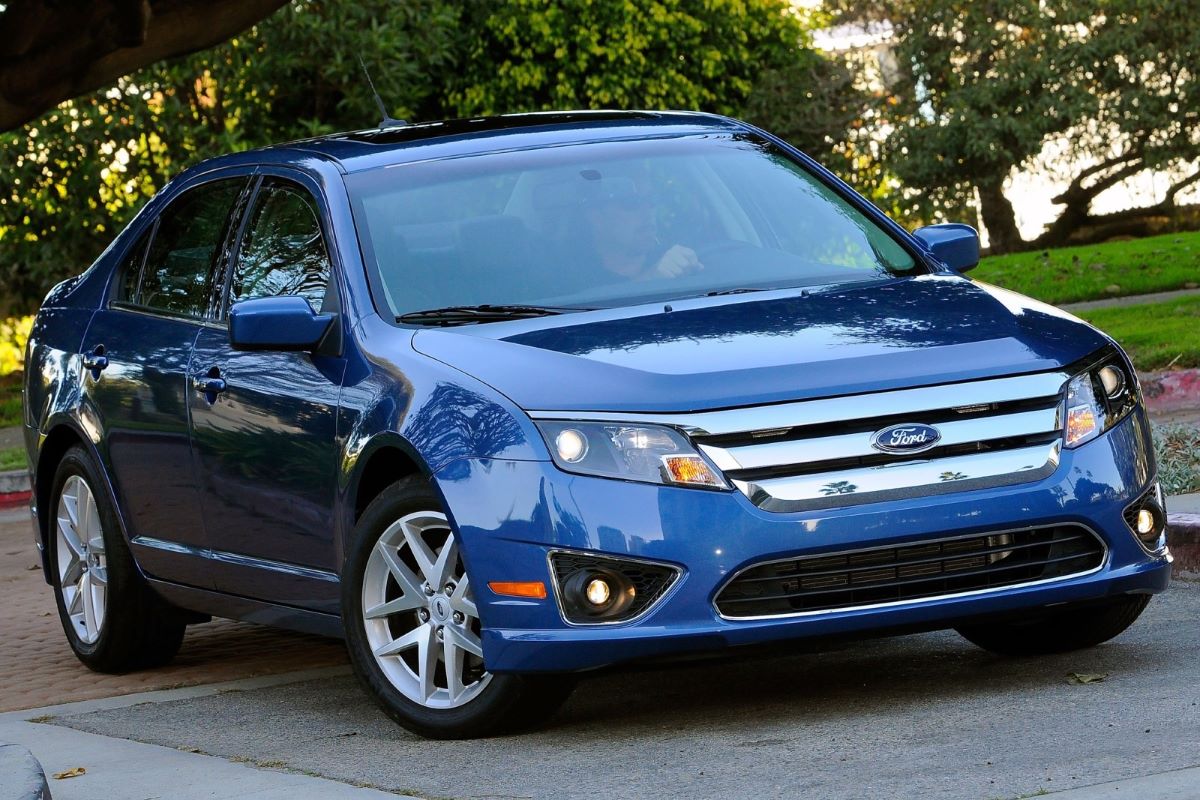
The 2020 Fusion is ranked 5 in the 2020 Affordable Midsize Cars category and #52 among Used Midsize Cars under \$15K, with an overall U.S. News rating of 8.3 out of 10.
In terms of interior design, the Fusion offers a comfortable ride and user-friendly controls, though some parts of the cabin are trimmed with lower-quality materials. The infotainment system is responsive and easy to navigate, contributing to a positive overall driving experience.
On the road, the Fusion handles well and absorbs bumps with ease, although the cabin could benefit from better insulation to reduce road noise. The vehicle performs best in everyday driving scenarios, but drivers seeking more excitement may prefer a rival with a stronger engine lineup.
Despite its drawbacks, the 2020 Ford Fusion remains a solid option for buyers who prioritize reliability, comfort, and usability. Those interested in better performance might look to the 2020 Toyota Camry and its available V6 engine, while drivers seeking improved fuel efficiency should consider the 2020 Fusion Hybrid or the plug-in 2020 Fusion Energi.
With a blend of practicality and affordability, the final model year of the Fusion still holds its own in the used midsize sedan market.
This review is built on a combination of expert opinions and hard data to help buyers make informed decisions. U.S. News Best Cars, reviewing vehicles since 2007, maintains strict editorial independence by refusing expensive gifts from automakers, and uses a third-party to manage advertising, ensuring that rankings remain unbiased and credible.
8. Hyundai Sonata (Non-Turbo Models)
The base engines in older and newer Hyundai Sonata models, especially the 2.4L MPI engines, feature long-life spark plugs and clean combustion processes.
Routine maintenance usually doesn’t require spark plug changes until well past 100,000 miles.
Now that SUVs dominate the automotive market, sedans must distinguish themselves to remain competitive. With that in mind, Hyundai has taken a bold step forward with the 2024 update of the midsize Sonata.
Its futuristic front and rear styling enhance the car’s flowing profile, giving it a distinctive and modern look. Inside, the Sonata features an upscale cabin with attractive materials and design.
The addition of available all-wheel drive increases the Sonata’s appeal, particularly for drivers in regions prone to inclement weather. Rather than focusing on boosting performance, this version of the Sonata aims to increase driver confidence in slippery conditions.
So far, the refreshed Sonata has made a positive impression. During our test of the sporty N Line trim, we highlighted its comfortable suspension tuning and swift acceleration. The Sonata continues to deliver strong value by offering a wide array of technology and its most powerful gasoline engine at a competitive base price.
While the hybrid variant provides a smooth and cushioned ride, it is held back by sluggish acceleration and a transmission that feels hesitant when pushed during spirited driving. Nevertheless, we still recommend it for those prioritizing excellent fuel efficiency.
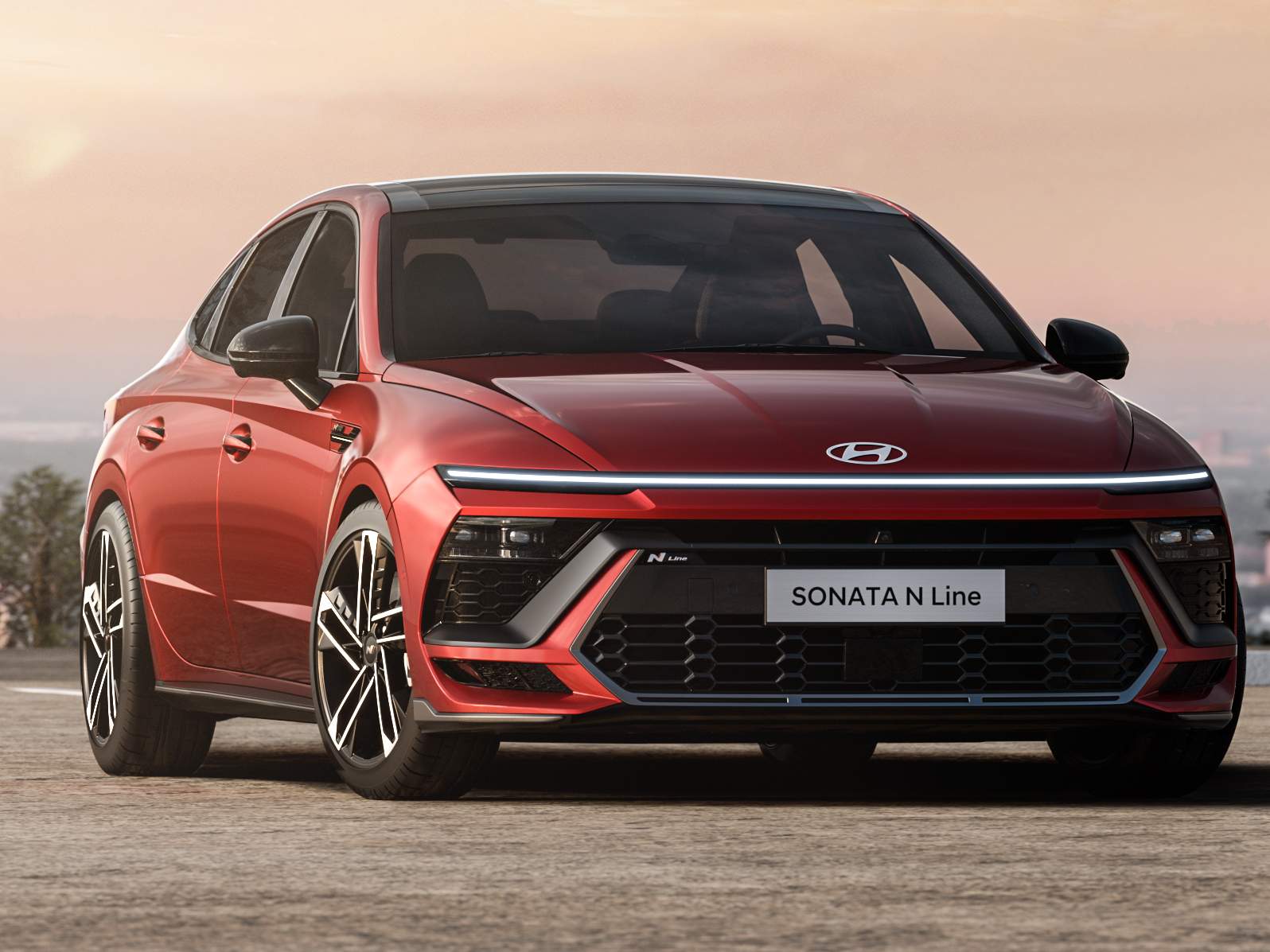
Hyundai presents the 2025 Sonata with three distinct powertrains. The standard engine is a 2.5-liter inline four-cylinder that produces 191 horsepower and 181 lb-ft of torque. Power is sent to the front wheels through an eight-speed automatic transmission, though all-wheel drive is now an option.
With all-wheel drive, the Sonata completes the 0–60 mph run in 7.9 seconds. We expect fuel economy figures to remain consistent with the 2024 EPA estimates: 25 mpg in the city and 36 mpg on the highway for front-wheel-drive models, and 25/34 mpg for those equipped with all-wheel drive.
Buyers seeking more robust performance should consider the Sonata N Line. It features a 2.5-liter turbocharged inline four-cylinder engine that delivers 290 horsepower and 311 lb-ft of torque. This powertrain is paired with an eight-speed dual-clutch automatic transmission and can propel the Sonata from 0 to 60 mph in just 5.3 seconds.
However, Hyundai removed the N Line’s limited-slip differential for 2024, making it harder to manage wheelspin through corners. Fuel efficiency also dips, with the EPA rating the 2024 N Line at 23 mpg city and 33 mpg highway.
The Sonata Hybrid returns for 2025 in two trims: SEL and Limited. It uses a 2.0-liter inline four-cylinder engine paired with a 51-kW electric motor, combining for a total output of 192 horsepower.
All hybrid models are front-wheel drive and use a six-speed automatic transmission. The Sonata Hybrid reaches 60 mph in 8.6 seconds. Fuel economy is expected to mirror the 2024 ratings, which are 50 mpg city and 54 mpg highway, delivering an impressive estimated range of 680 miles.
The SEL trim includes features such as a four-way power-adjustable passenger seat, wireless device charging, and a leather-wrapped steering wheel.
Moving up to the top-tier Limited trim—the most luxurious version of the Sonata—adds upscale amenities like leather-trimmed seating, blind-spot view monitoring cameras, a panoramic sunroof, and Hyundai’s Remote Smart Parking Assist. This feature allows the vehicle to move short distances via remote control using the key fob.
9. Chevrolet Malibu (1.5L Turbo with Direct Injection)
Although turbocharged engines often wear components faster, the 1.5L turbocharged unit in the Chevy Malibu is paired with long-life spark plugs and a smart ignition control system.
Many drivers see plug life exceeding 100,000 miles with ease. As the Chevrolet Malibu approaches the end of its production run, it leaves behind a legacy spanning 60 years in the midsize family sedan segment.
Named after the iconic seaside town that evokes images of sun, surf, and the Beach Boys, the Malibu has maintained a steady presence on American roads. For its final year in 2025, the Malibu sticks with its sole powertrain—a turbocharged 1.5-liter four-cylinder engine paired with a continuously variable transmission (CVT).
While this setup doesn’t deliver rapid acceleration, it provides smooth and consistent performance once the car is up to speed. In comparison to more modern rivals like the Toyota Camry, which now comes standard with a zippy hybrid powertrain and offers both front- and all-wheel drive, the Malibu feels a step behind.
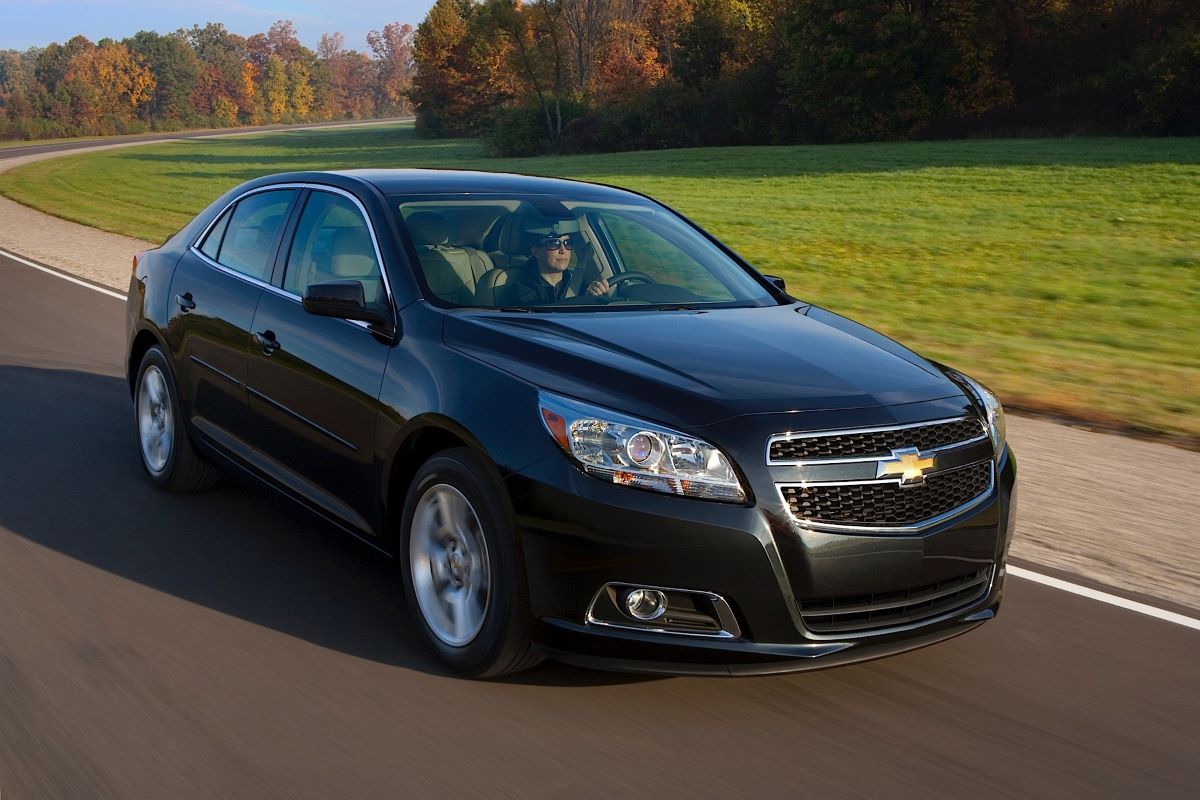
Competitors such as the Honda Accord and Hyundai Sonata widen that gap further by including a richer list of standard features, which makes the Malibu seem under-equipped in today’s market.
Despite not leading the segment, the Malibu still has appealing qualities. It offers comfortable seating, a user-friendly cabin layout, and a sleek exterior design that remains easy on the eyes.
For buyers prioritizing affordability and simplicity, the Malibu’s competitive pricing could be a decisive factor. In the 2025 model year, it ranks seventh among midsize family sedans, behind popular models like the Honda Accord, Toyota Camry, and Kia K5. Chevrolet made no changes for 2025, as this marks the final production year for the model.
Unlike many of its rivals, the Malibu doesn’t offer multiple engine choices. Instead, it sticks with a 163-horsepower turbocharged 1.5-liter four-cylinder that drives the front wheels through a CVT. While it lacks the performance edge of some competitors, the Malibu makes up for it with an impressively composed ride.
10. Acura TLX (V6 Models)
Acura’s V6-powered TLX uses high-quality iridium spark plugs and advanced engine controls. The well-tuned VTEC engine ensures clean combustion, helping spark plugs last up to 105,000 miles or longer under normal driving conditions.
The TLX doesn’t quite land in the compact sports sedan category — that space belongs to the Integra — yet it also falls just short of being a full-fledged midsize, placing it in a middle ground that makes direct comparisons a bit complicated. The base version comes with standard front-wheel drive and a 272-hp turbocharged four-cylinder engine, with the option to upgrade to all-wheel drive.
This setup puts it in competition with slightly smaller German rivals like the base Audi A4 or BMW 3-series. With its wide stance, low profile, and long proportions, the Acura has a striking appearance. Still, despite its larger overall dimensions, the TLX’s rear seating falls short in legroom when compared to an Audi A6 or BMW 5-series.
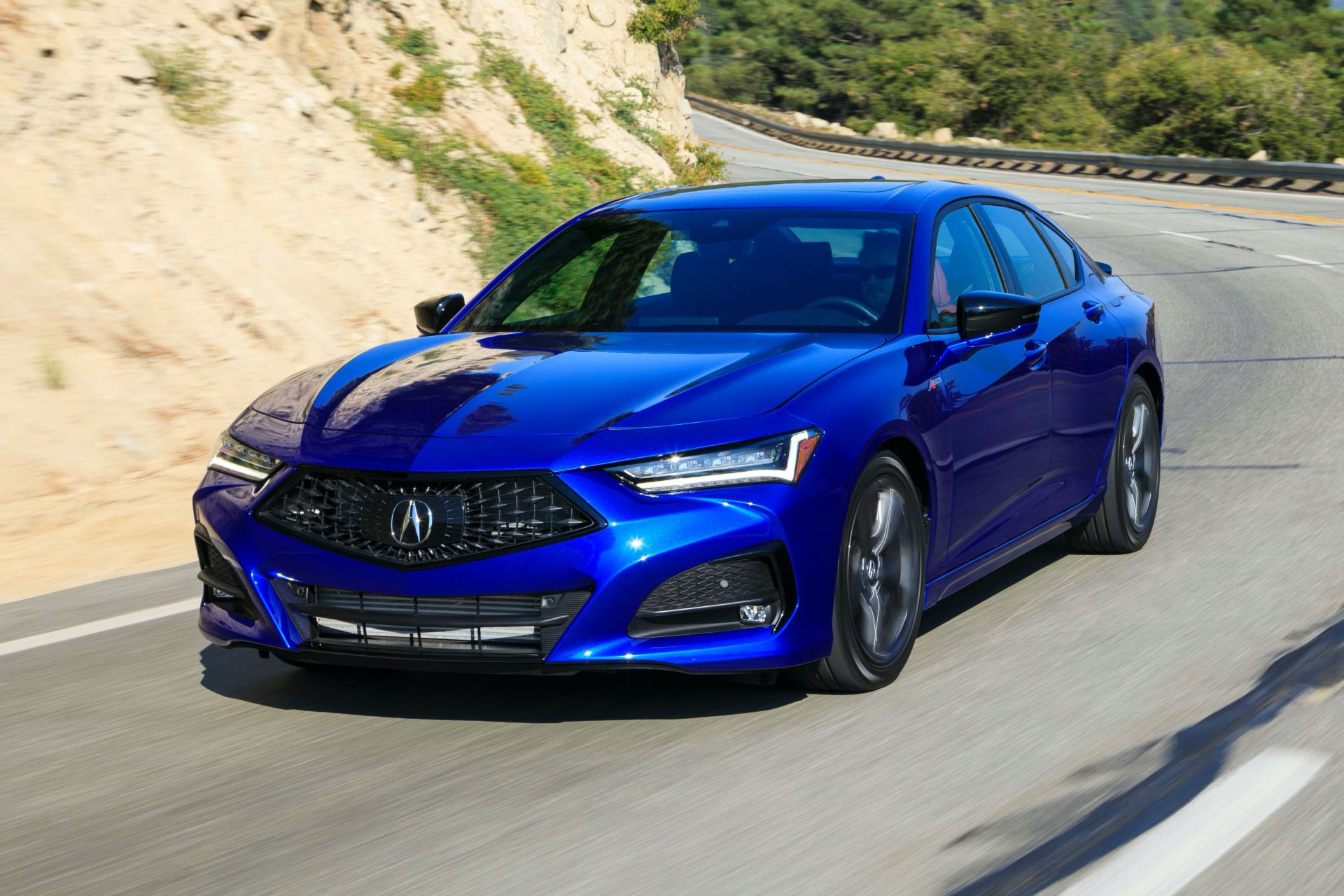
Moving up to the Type S trim gives you a 355-hp turbocharged V-6, along with brakes and steering that have been tuned with real precision. The standard SH-AWD system on the Type S does an impressive job of hiding its front-wheel-drive origins, but even with its performance-focused upgrades, the car’s extra weight ultimately keeps this sporty sedan from achieving true greatness.
While spark plug replacement is inevitable in any gasoline-powered car, choosing a vehicle with a high-quality engine and durable spark plugs can significantly reduce how often you need to replace them.
For anyone looking to save on maintenance costs without sacrificing performance, the models listed above are excellent options.

